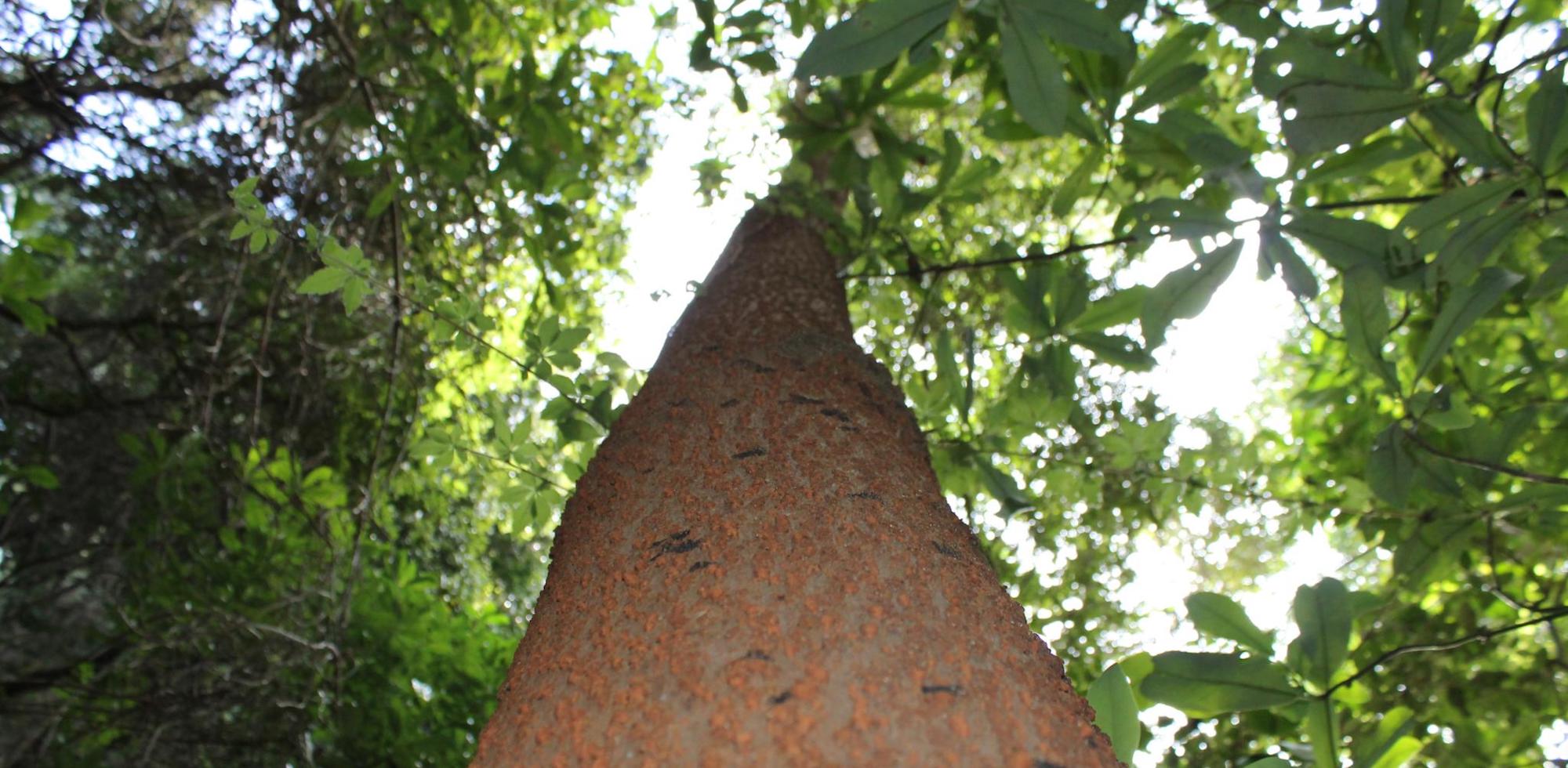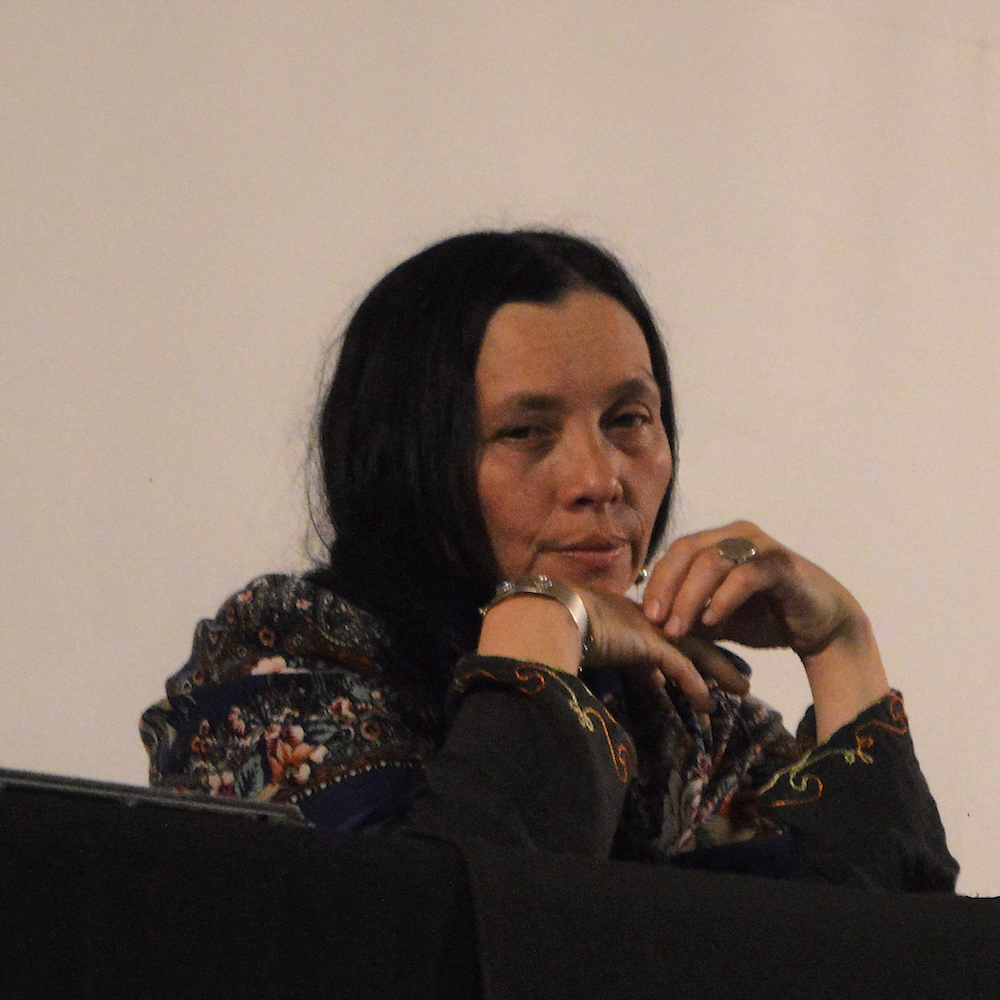Iñche vy Pindatray pingen tati.
Choyvn Fvtawillimapu mo, dewma ñi pewman, eluñgen kakelu vy tati: Pindapichvn pingelu.
Rupay che mvten reke, kvpalen tvfachi katan wirin kvf foye trolvf mew.
I am not speaking Mapudungun, I am not speaking Chesungun, I am simply writing a few letters that are thought and sprout up from the tongue that wants to carry on being in me, be it stumbling be it linguistically erring, this text is but a metaphor, may no one think I mean to give a lesson in Mapuche language . . .
Fvtra kuify mew, mapu niey kisu ñi ngvnen, mogen niey kisu ñi ngvnen, chuchi mvlelu mogen mew, fillke mogen mvlelu mapu mew, kom iñchiñ mvleiñ tvfachi newen mew.
They named me by blood, but another name was given to me in pewma. With this name I rise to sip these letters from the tree that shelters me.
My Mapuche name is Pindatray, but they gave me another name in pewma: “Pinda pichvn, smooth feather woman smooth wing woman,” they said, “hummingbird feather,” and I understood that to write was, for me, a command, and that just as everything is put in its place, these name-things are put in their place too.
Tripaken wentefoye pvle, eluken tvfa wirin, eluken tvfa neyen, tvfa wirin mew iñche lawentuken.
I rise inside this lawen that is my writing, this breath of letters that look dead but live.
Fachiantv mawui Riñinawe lelfun mo, truyuley ñi piwke kuse, truyuley ñi weche piwke, lemorriaaa kuifi mawun
Kuse mawvn elumun newen pu che ngealu
Ngoymamulayaiñ, mulepe ko tati mapu mo
Tralkan falls in the Riñinawe Valley: the rains we longed for, the rains we asked for, the waters we belong to.
Choyvn mawvn mo, wefvn mawvn mo, and, submerged in these waters, I write from my fundamental tear, wingkawvn ñi sungun mew, from between torn languages, between letters and aukin, crossing by wampo the dark blue night, between the spirit’s conversations with the epistemologies of plunder, the spirit’s struggles, arguments, and secret love affairs, denials, hatreds, jealousies, and concupiscences, and so there will I write, leaping scratching ripping skin, between waves that batter the consciousnesses that dwell within me, that strange condition of being and not being, that one and the other too, of dwelling in three or more hearts . . .
“kiñe rume piwke nielai,” they say and scorn is sown, Illamtun, that condition that the fundamental looting imposes and permeates, looting everything, extracting everything and just like that, looted and used up, it makes us dwell in breathe in be the SCORN between us women/us men, ñi kutrankawkvlen rume, welu iñche choyvn tvfachi az mapu mew, petu mogelen ñi mapu mo, chi mapu chew ñi weluiñ, chi ruka chew ñi trawupaiñ, chi lelfvn chew ñi lameuntun.
Iñchiñ ngeiñ mapu tañi pvñem
Iñchiñ ñgeiñ mapu tañi yall
Petu kutrankawkvley ta che, femngen konmay winkawvn, kutrankawkvley pu che ñi kalvl, kutrankawkvley pu che ñi rakizuam, kutrankawkvley pu che ñi piwke.
Fantepu, petu mogeley tvfachi Kutran iñchin mew, wesa dvngu konmay tayiñ rakisuam mew, ti wesa kvrrvf konmay, trafentukey ta che, ti meulen mew miawlu, wingkawvn trafentu reke, kutrankawkvley monku che, chogi ta kvtral ponwi kalvl che mew tati.
¿Iney akuy tañi mvllo mew?
¿Iney akuy tañi rakizuam mew?
Mvlekey Kutran, mvlekey lawen, chumgechi wefvy Itrofill lawen taiñ mapu mew, iñchiñ pepi konaleayiñ, rvpvyeaiñ pelon wangvlen fey ti pvle.
Welu turpu allkutulaiñ, fey mew kutrankawkvleiñ, fey mew kimlaiñ chem no rume.
One day far too long ago, this sickness came to live among us women and among us men, down to this day, between the folds of our skin, in our brains, in our most hidden longings, colonialism came into us and from the Mapuche marrow it stripped our flowers and songs down to today; it put out the fire in our hearts.
Where there is sickness there is lawen ever since it sprouted into the mapu, and so we can heal in the brightness of the star that comes back each and every day.
This sickness that seems a trafentu, a topentun, like bumping in the bottomless night into something that, before we understand it, takes us.
¿Chew pvle amuy rayen ñi aukiñ?
¿Chew pvle amuy rayen ñi tayvl?
¿Chew pvle amuy itrofill mogen ñi vlkantun?
Where did the singing of all lives go?
¿Chumvll wvñotuaymi rayen ñi aukiñ?
¿Chumvll wvñotuaymi rayen ñi tayvl?
¿Chumvll wvñotuayvn itrofill mogen ñi aukiñ?
Even in sickness, why do we sing why write why talk to one another still in the middle of the night under the milky starlight, holding tight to the kustralwe in our hearts, our piwke tired from so much illusory “multiculturalism”?
¿Chumngechi ngeiñ ñuke kustralwe ñi pvñem?
Kuifi ñi pichimalenkael, wvne pewman tvfa wirin tati, pewman ñi kakelu uy, wirin kvf foye trolvf mew, fey mew, iñche ta pepi pewmayan wirin ñi pvllv.
When I was a little girl I began to dream of letters, and so I think that letters, somehow, are alive and eat their fill from the world like a plant or precious stone . . . letters are a living force of nature that takes their shape and many others, so as to exist.
Since this writing was given to me, since a name was given to me with which to hold letters in place, since this command was given to me, I can dream the spirit of these letters.
Mvlekefui kiñe kumwirife, Manuel Aburto Panguilef yem, pienew: “Kisugvnelan tati.”
A long time ago there lived a man who wrote. “I do not belong to myself,” he wrote on thousands of pages around 1916, most of which were burned by the repressive forces of the day because they were dangerous letters—letters marked with the kvpan and the tuwvn of thousands of Mapuche who dwelled there too, their names their lands their dreams their delusions. His name: Manuel Aburto Panguilef.
Kusra ñi wirin, ko ñi wirin, lelfvn ñi wirin, mawizam ñi wirin, anvmka ñi wirin, mawvn ñi wirin,
itrofill chemkvn mvley Manuel Aburto Panguilef ñi wirin.
Panguilef ñi wirin, fvtra aliwen rukangekefuy, fey mew mvlekefuy ti fvren ka reyñma mapunche tati, fill mapu ñi ngen, mapu ñi uy, ko ñi uy, anvmka ñi uy, trayenko ñi uy, Panguilef kimi mvley newen wirin mew.
Fey zewmay kiñe wirin reke tuwun , kom che mvlechi tiyechi mapu mew.
Panguilef yem’s writing was a great house where the Mapuche families of his land, their names, their spirits, their waters, their forests all lived. Many things and beings lived within it.
For to whom do your letters belong, Panguilef, your letters that ring like the trees that come and go, bearing the conversations of the spirits and the stones?
Wirin niey ngen kafey, pienew, fillke newen ñi aukiñ.
Itrofill tukulpan mvley ta wirin mew kafey, ti kumwirin mapunche, tvafchi wirin allkvtumekey kufi ka we svngu tati.
This deep writing that listens to the old things and the new things.
Words must have a master too because they are alive and all that exists has ngen. So words sprout from within me like pennyroyal, elder flowers, and new chacay.
Ngen is understood as the principle (master/mistress) of self-balance and self-preservation, which allows for all things to exist. Life self-sustains through the embrace of thousands of ngen that dwell within it.
Poetry has ngen, song has ngen, Mapuche writing has ngen, I dare say, though it might sound heretical to purist ears. And it has ngen because it is writing with spirit. Few dare say these things that Panguilef yem helped me understand.
Just like Panguilef, I do not belong to myself when I write.
¿Chem vy niey ti kumwirin?
Pun mew umawtukey ti kumwirin, pewmatukey ti kumwirin, femgechi ti kumwirin niey anvmkan, niey menoko, niey winkull, niey wawal kulliñ lelfvn mew, ti wirin niey lemuntu, ti wirin niey kowvll rayen.
What name does this deep writing bear?
At night it sleeps, at night it dreams, for it has forest, waters, brush, copihue flowers, wild animals watching in the dark.
“Pindapichvn, Hummingbird feather”
Riñinawe Lof mapu mo
Awka Lafken, Puelwillimapu
Wallmapu
Translator’s note: “Letras catadas en cortezas de canelo,” like much of Adriana Paredes Pinda’s work, is a macaronic text, moving effortlessly between Mapudungun and Spanish, choosing to disregard the barriers between the individual, indigenous language and the colonial lingua franca.
(Also like much of Adriana’s work, it is a text that lends itself to being read aloud; I encourage its reader to imagine it being declaimed, not restrained by the limits of screen or page.)
This text asks an interesting question of its translator: what to do with this linguistic mixture, more suspension than solution? Should one render the whole thing into English, so the monolingual English-language reader can, well, read it? Should one translate the Spanish to English and the Mapudungun to Spanish, bringing the Mapudungun portions closer to the average Anglophone reader’s frame of reference while maintaining a certain foreignness? Or should the Spanish become English and the Mapudungun stay Mapudungun, leaving the vast majority of readers of English with a text they will find largely unintelligible?
As you can see, I have chosen the latter option. It is the cruelest to the reader, I think, but also the most faithful to the original spirit of the text. Those who read or hear Adriana’s original version—unless they are bilingual in Mapudungun and Spanish—are likewise left halfway in the dark. I think readers and hearers of English deserve the same experience. We are not meant to understand everything.
This translation may appear esoteric or half-baked—either critique is valid—but I believe it is a better translation for it. If you don’t speak or read Mapudungun yourself, then as your eyes take in the Mapudungun portions of the text, I invite you to think about why you don’t speak or read this language, and why the idea that you should might seem absurd.
I thank Elisa Taber and the editors of Words Without Borders for the chance to share these thoughts, and Adriana for the chance to help her words on their journey through the world.
Copyright © 2023 by Adriana Paredes Pinda. Translation © 2023 by Arthur Malcolm Dixon. All rights reserved.
To learn more about Mapuche writing, read Liliana Ancalao’s conversation with Elisa Taber: “Living Words: An Introduction to Five Contemporary Mapuche Texts.”













